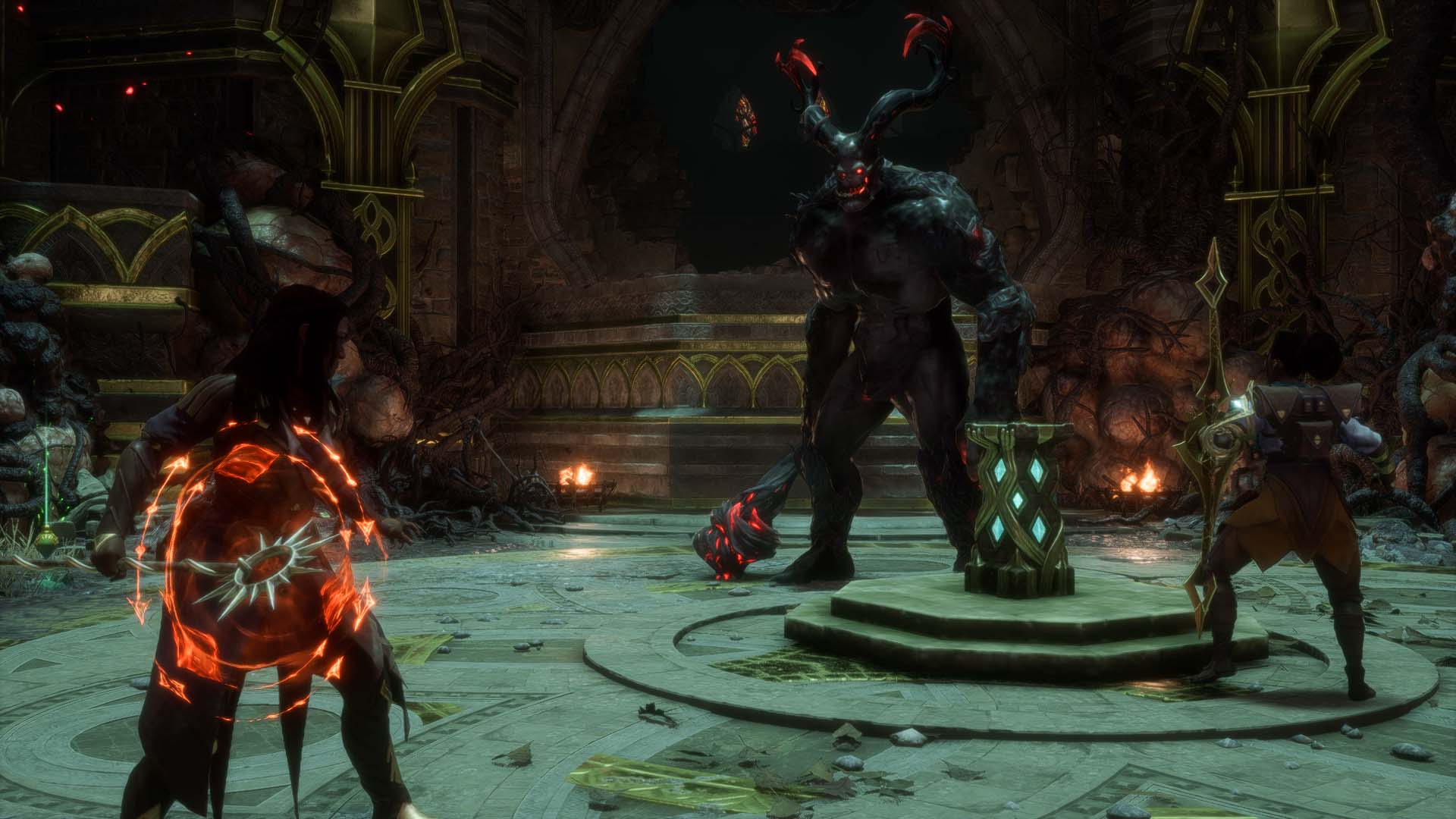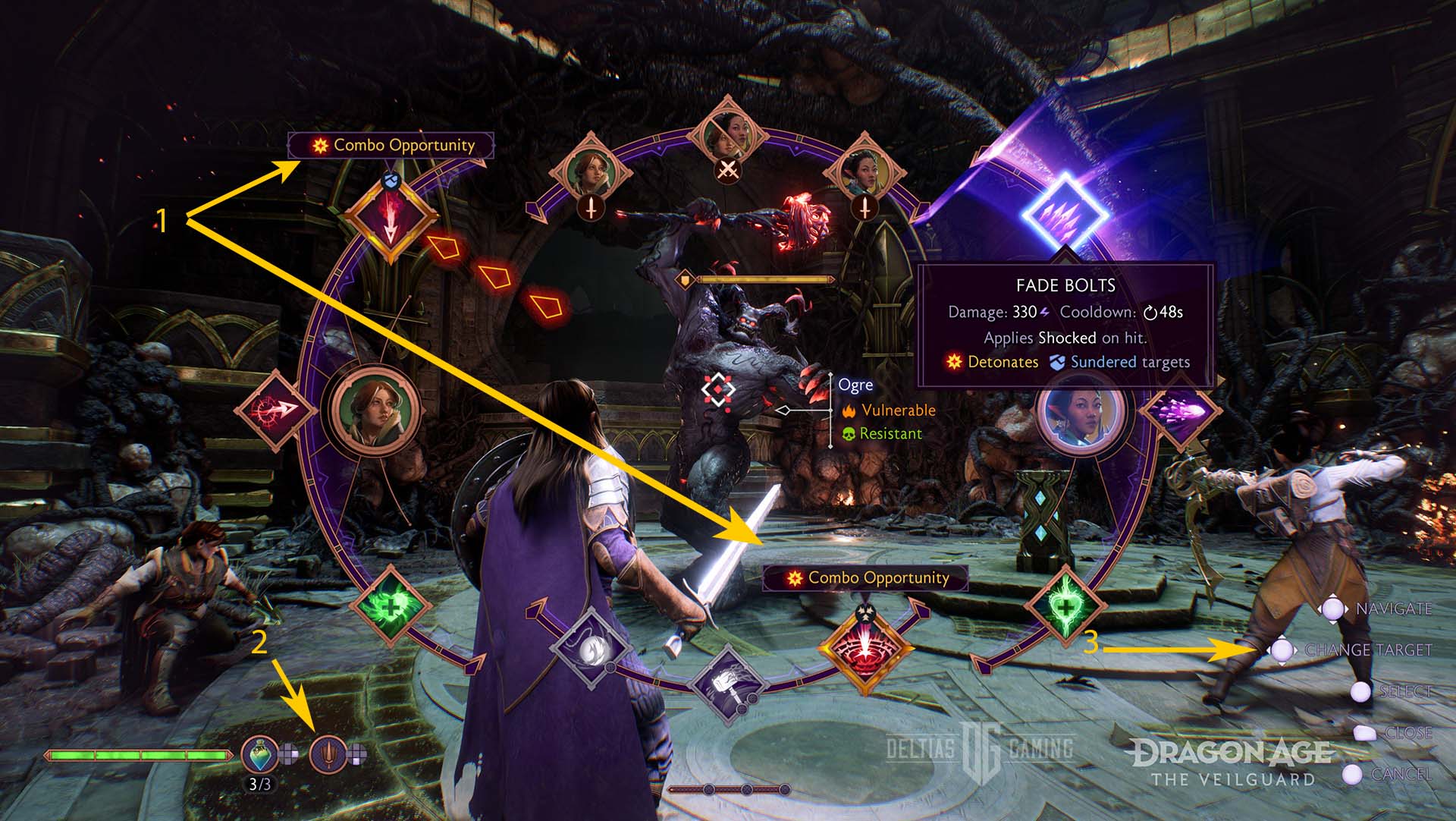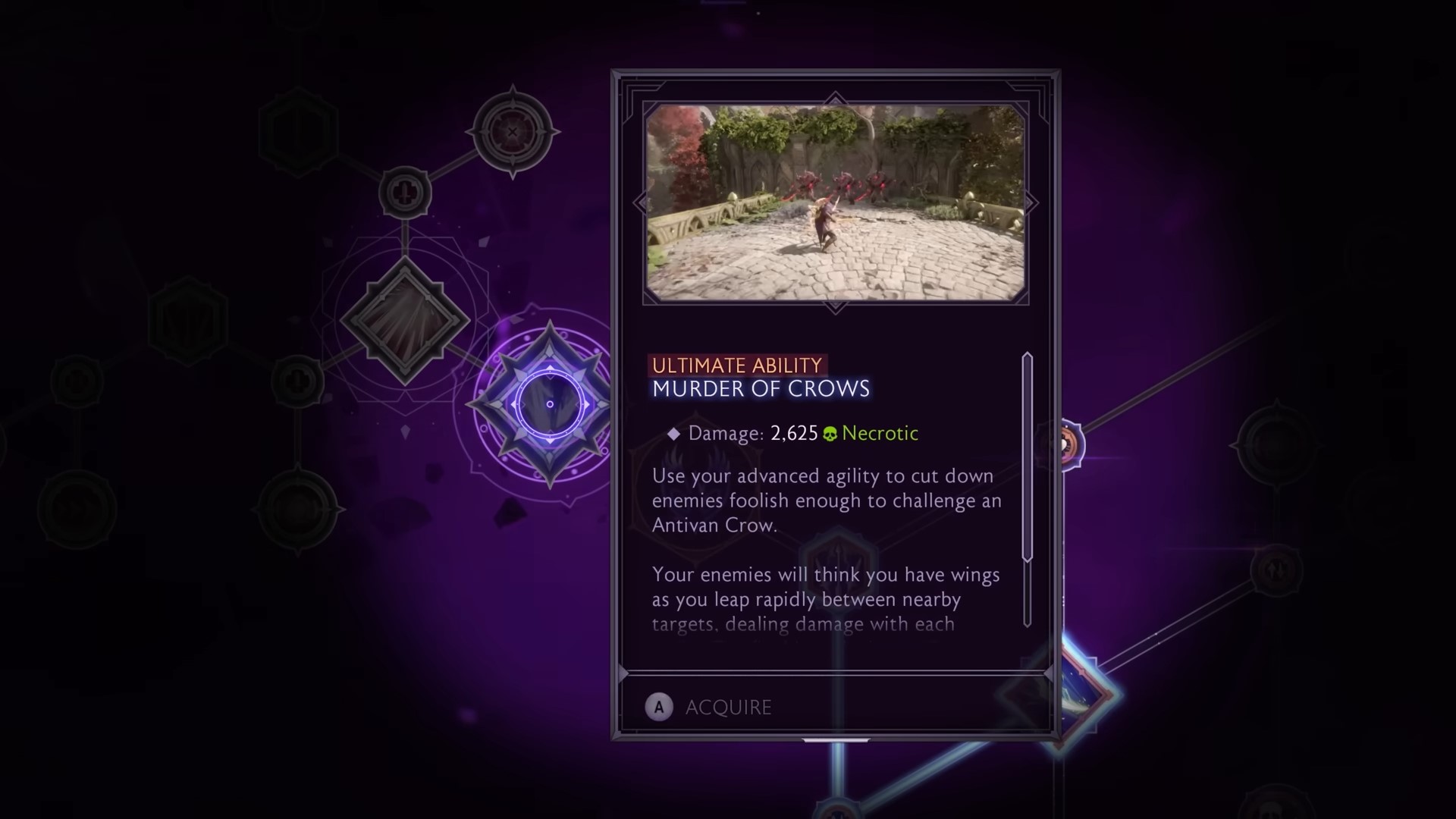Discover everything about Status Effects and the important role they play in combat in Dragon Age: The Veilguard.

Dragon Age: The Veilguard is the fourth installment in the Dragon Age series from developer BioWare and publisher Electronic Arts. The game brings fans back into the world of Thedas a decade after the conclusion of events seen in Inquisition. In Veilguard, you will see the return of the Blight, along with darkspawn, demon, and many other enemies you’ll have to bring down. Along with gear, skills, and abilities understanding status effects and their combat role will drastically help improve your fighting chances.
In this guide, we’ll be covering all of the status effects in Dragon Age: The Veilguard, including primer and detonators, buffs, and debuffs, and their importance to effect combat in the game.
What are Status Effects in Dragon Age Veilguard?
Status effects in Dragon Age: The Veilguard are afflictions you can apply to enemies or buffs that you can grant to yourself or allies. Moreover, enemies also can inflict negative status effects on you and your party!
Therefore, status effects can play an important role in-game combat. Strategy for some of the larger bosses will be vital, especially when it comes to picking your companions and establishing primer and detonator combos.
All Status Effects in Dragon Age Veilguard
There are numerous status effects in Dragon Age: The Veilguard that can be divided up into three different types. Primer and Detonator status effects are applied by specific abilities from one party member and then detonated by a second party member. Consequently, these status effects are the most powerful and can have devastating results on the battlefield.
Furthermore, buff status effects can be applied to yourself or allies. While debuffs are status effects that can be applied to enemies. Both have their place in combat and can come from various abilities and skills.
All Primer and Detonator Status Effects

Primer and Detonator status effects can only be inflicted by you and your companion’s available abilities. With two compatible abilities activated one after the other, you can deal powerful blows to enemies. First, the Primer ability will inflict the status effect on the enemy. Then, the Detonator ability is activated, which now deals additional damage to your target.
The types of status effects and who primes and who detonates are based on class:
- Warriors can apply Overwhelmed and detonate Weakened
- Rogues can apply Sundered and detonate Overwhelmed
- Mages can apply Weakened and detonate Sundered
To apply and then detonate a status effect you must first pause combat by opening up the ability wheel. There, you will see all three of your available abilities at the bottom, with your two companions on the right and left. Look for abilities highlighted in gold to find your possible combos. Make sure to choose the ability that applies the combo first, and then second is the ability that detonates it. Then return to combat and the characters will automatically activate those skills in the correct order.
All Buff Status Effects
Buff status effects are those that increase your defense, resistances, decrease cooldowns, or grant a heal-over-time. They are always beneficial
- Deflect: The next attack against a target will be deflected and will do no damage.
- Enhanced Damage: The target deals more damage. This may enhance all damage or only a specific type (such as Physical, Fire, or Necrotic.)
- Immovable: An Immovable target is immune to physical reactions and interruptions.
- Invulnerable: An Invulnerable target is immune to damage of all kinds.
- Penetration: Penetration allows you to ignore a percentage of a foe’s defense, allowing you to deal additional damage.
- Precision: If a target has Precision, its next Charged or Final attack will be a guaranteed Critical.
- Quickened: Ability cooldowns are shortened while a target is Quickened, allowing them to utilize Abilities more frequently.
- Rallied: A Rallied target deals increased damage. Typically, companions will Rally you (or vice versa) via specific Abilities.
- Rejuvenation: A Rejuvenated target heals gradually over time while the effect is active.
- Resistant: A Resistant target has increased Resistance to all damage types. Specific Resistant statuses may apply to only certain damage types, such as Cold or Necrotic.
- Revival Charge: If a companion has a Revival Charge equipped, they can bring you back to life once when you fall in battle. Revival Charges are usually gained via equipping specific Trinkets on companions.
- Taunt: Enemies will be forced to attack a target that has Taunt active, giving other targets a break to heal and set up abilities without danger of being attacked. Taunt must be applied using an Ability.
All Debuff Status Effects
The opposite of buffs, debuffs are status ailments you can inflict on your enemies. Generally, debuffs can make an enemy weak to a certain type of damage, deal damage-over-time, or even slow you down. Moreover, it is also possible for your enemies to apply these debuff to your or your party.
- Arcane Mark/Bomb: Arcane Mark builds up over time when you perform Light Attacks. When enough damage has been dealt, it turns into Arcane Bomb, which can be triggered by Heavy Attacks.
- Bees!: An extremely rare status effect, primarily triggered by specific weapons or armor, Bees! deals physical damage to targets over time.
- Bleeding: A Bleeding target takes Physical damage over time. Deals extra damage to enemies with a standard health pool.
- Blighted: The Blighted status is typically caused by stepping in Blight Pools that appear when fighting Darkspawn. If your Darkspawn foes are Blighted, they deal more damage and have increased resistance. If you or your companions are Blighted, you deal less damage and have decreased resistance.
- Burning: Deals Fire damage over time. Deals extra damage to targets with Armor.
- Chilled: Deals Cold damage over time. The target’s movement and attack speed are slowed.
- Frozen: A Frozen target cannot attack or move.
- Knocked Back/Down: If a target is Knocked Back, it is physically pushed back by the force of the attack. If it is Knocked Down, it is pushed to the ground and temporarily cannot attack or move.
- Necrosis: Deals Necrotic damage over time. Deals extra damage to targets with magical Barriers.
- Overwhelmed: While Overwhelmed, the target takes additional Stagger damage.
- Quietus: A status unique to Emmrich’s abilities, Quietus deals Necrotic damage each second for a short period of time.
- Shocked: Deals both Electric and Stagger damage over time.
- Siphoned: Deals Necrotic damage to the target, which is then returned to the ability’s caster as health.
- Staggered: Unlike other status effects, which require specific abilities, all attacks deal Stagger damage. An enemy’s Stagger is measured by a purple bar above the enemy’s head. When a foe is Staggered, it cannot attack or move, and you can perform an extra-powerful attack called a Takedown to deal lots of damage to it.
- Sundered: A Sundered target takes increased damage from all sources.
- Vulnerable: Vulnerability reduces resistance to a specific damage type (such as Physical, Fire, Cold, or Necrotic.)
- Weakened: A Weakened target’s attacks deal less damage for the duration of the effect.
How do Status Effects work in Dragon Age Veilguard?

Status effects in Dragon Age: The Veilguard only work when you use activate abilities to apply them to an enemy or ally. While there are passive buffs that can increase the duration or power of a status effect, you can’t apply one passively.
What is the importance of Status Effects in Dragon Age Veilguard?
Status effects are hugely important in Dragon Age: The Veilguard’s combat and you’ll especially want to master your understanding of primer and detonator combos. Combo abilities with your companions can deal an amazing amount of damage and will be necessary against large, difficult bosses.
Therefore, before you set out from the Lighthouse you will want to make sure you choose two companions that can either combo abilities with you or each other. Additionally, the primer and detonator status effects are tied to certain classes. Therefore, it is ill-advised to take three Warriors out into the field because none of them would be able to prime a status effect another could detonate.
Consequently, you will always want to have a mix of classes in your party. Three different classes with the right abilities could give you access to two different combos. However, even just having two different classes in your party should give you at least one effective combo.
FAQs About Status Effects in Dragon Age: The Veilguard
Q1: How many status effects can be active at once in Dragon Age: The Veilguard?
Answer: There is no limit to the number of status effects you can have active in Dragon Age: The Veilguard, beyond the limits of the three abilities you can equip and what kind of skills your companions use. Because there is a limit of only three abilities you can use, you likely won’t be able to cause more than a few status effects at once.
Q2: How can you increase status effects in Dragon Age: The Veilguard?
Answer: You can increase some status effects in Dragon Age: The Veilguard by unlocking Ability Upgrades and Passives in your class skill tree. Furthermore, there are some runes you can equip to the Lyrium Dagger that will increase the duration of various status effects.
Looking For More?
Thank you for reading the Everything about Status Effects in Dragon Age Veilguard guide. We provide the latest news and create guides for Baldur’s Gate 3, Fallout 4, ARK Survival Ascended, and more. Also, watch me play games on Twitch or visit my YouTube channel!
- Dragon Age: The Veilguard – Backgrounds (Factions) Explained
- Dragon Age: The Veilguard – All Companions and Everything We Know
- Dragon Age: The Veilguard Classes and Specializations
- Dragon Age: The Veilguard – All Playable Races
- Support us at Checkout Using Promo Code DELTIASGAMING (here)
 Reddit
Reddit
 Email
Email


